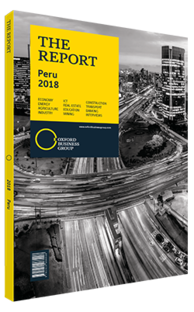Medium-term prospects suggest globalisation is set to continue
Decades of growth in trade and foreign investment have seen the economies of the world become more interconnected and interdependent than ever before. The production of goods and, increasingly, the provision of services has become fractured across borders as corporations create and integrate into regional and global value chains – a process reinforced by international trade and investment regimes. On aggregate, advanced economies have benefitted from these developments, while emerging markets have become the main drivers of growth around the world. However, recent years have seen a new scepticism towards globalisation emerge, alongside more protectionist policies that could threaten this global economic landscape.
Political Fallout
Globalisation has always faced criticism, but the global financial crisis of 2007-08 and the widespread political backlash that followed, particularly in advanced economies, has called its principles into question. Many regard the election of Donald Trump as president of the US and the success of his protectionist rhetoric, along with the UK’s Brexit vote in 2016 and the drive for independence in Catalonia, as proof of economic discontent among the population.
This gradual deglobalisation phenomenon is not just confined to the most advanced economies. Established in 1981, the Gulf Cooperation Council (GCC) consists of six countries in the Gulf. Efforts to further integrate the region’s common market were impacted in June 2017 following the imposition of an economic embargo on Qatar, and the severing of diplomatic relations by fellow GCC members. In emerging economies, this phenomenon is generally characterised by greater trade tariffs and investment restrictions than in their advanced economy counterparts. As a result, a slowdown or a reversal in liberalisation may be even more of an issue for some emerging markets, with negative implications for their further integration into global value chains.
Cause for Optimism
Despite all this, there have been some positive developments. Although President Trump announced the US would no longer participate in efforts to finalise the Trans-Pacific Partnership (TPP) with 11 other countries in the Pacific basin, the other 11 parties resurrected and renamed the pact as the Comprehensive Progressive Agreement for TPP, signalling their intention to proceed without the US. In addition, on September 21, 2017, after many years of negotiation and a long chain of discussions, the Comprehensive Economic and Trade Agreement between Canada and the EU entered into force provisionally, pending final ratification by national and regional legislatures. The EU has signalled that it could be a potential model for the EU-UK relationship following Brexit.
Integration & Growth
While political and economic integration within Europe may be at something of a crossroads, other regions have continued their own integration efforts. In Africa regional integration has a long pedigree, with a large number of regional economic communities – with varying degrees of integration – recognised by the African Union. In 2017 the Economic Community of West African States gave a green light in principle for Morocco to join the regional grouping, which would see the country sign up to free trade with the other 15 member countries.
While trade growth has been disappointing for most of the decade since the global financial crisis, the latest projections from the World Trade Organisation suggest that merchandise trade growth is picking up again and was likely to have reached 3.6% for 2017 – 1.3 times that of global GDP growth – and that it would moderate slightly to 3.2% growth in 2018. At the same time, the UN Conference on Trade and Development projects modest year-on-year increases, with FDI flows to reach an estimated $1.85trn in 2018, although this is still below the record levels that were seen in 2007.
Even if progress is slower than in recent decades, positive trade agreement developments, combined with trade growth and improved FDI flows, suggest the march towards globalisation is unlikely to end soon.
You have reached the limit of premium articles you can view for free.
Choose from the options below to purchase print or digital editions of our Reports. You can also purchase a website subscription giving you unlimited access to all of our Reports online for 12 months.
If you have already purchased this Report or have a website subscription, please login to continue.

